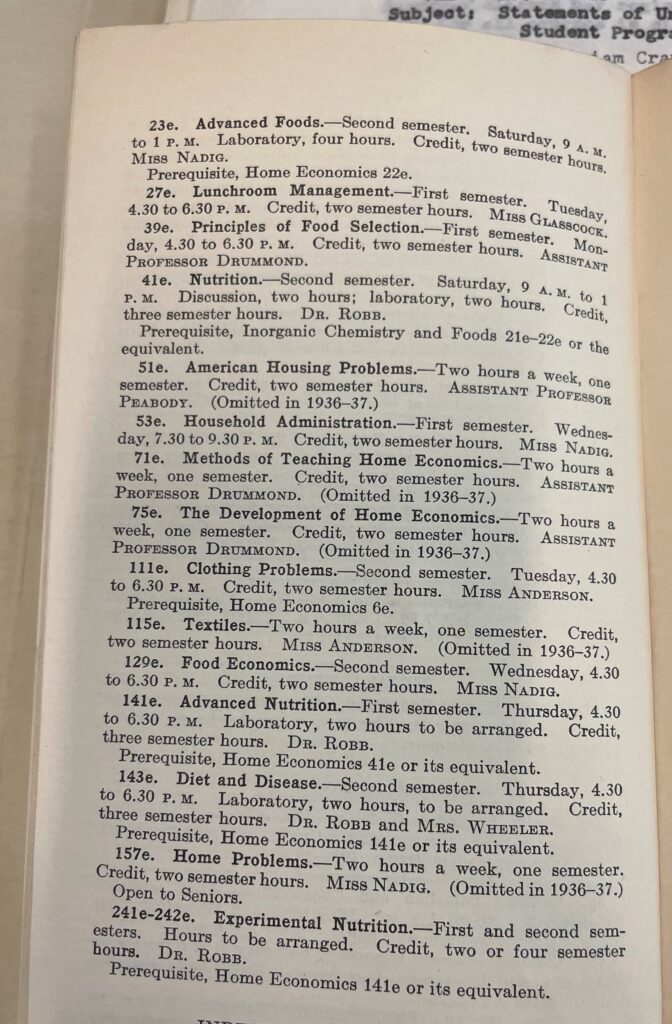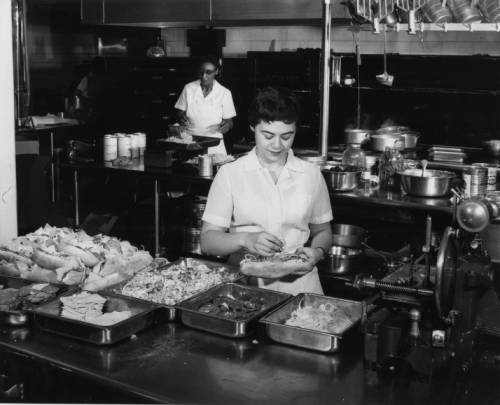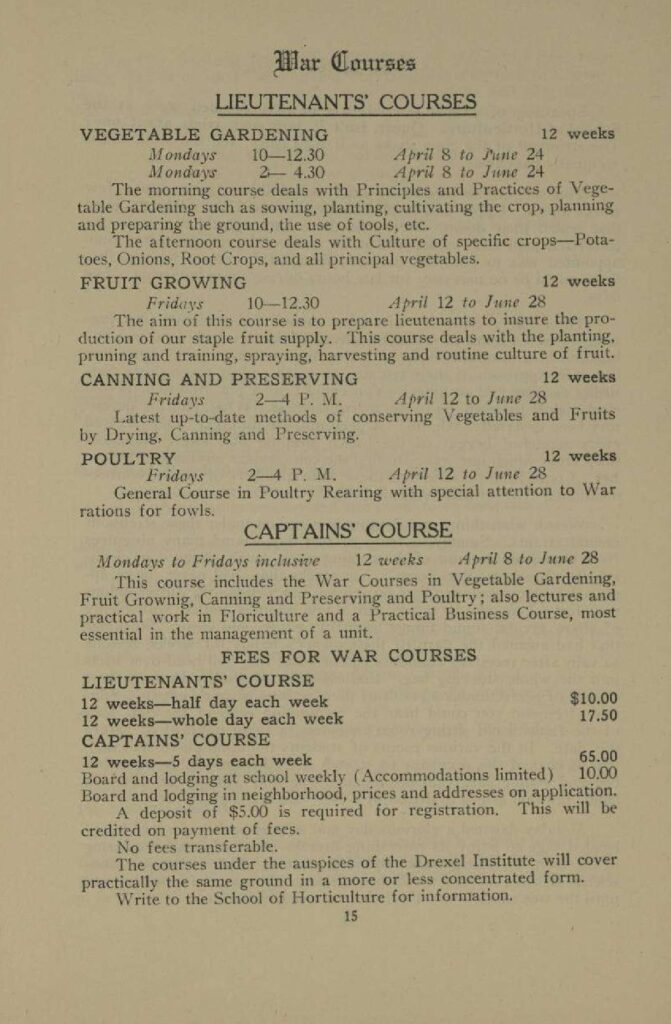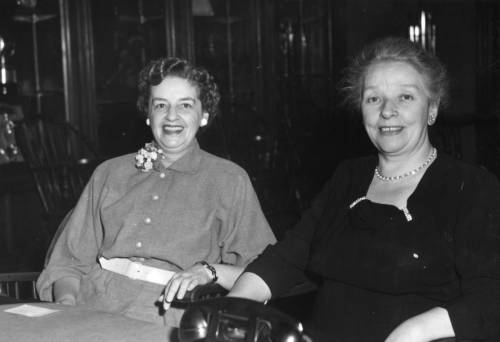By Lauren Griffin, Public History MA student at Temple University
Soon after Temple College was established, the administration debuted its Department of Household Science, later to be called the Women’s Department, in 1894. This department offered courses related to home economies, which included cooking, sewing, and household management. This department was initially headed by Sarah Conwell, Russell Conwell’s wife. It was then taken over by Laura Carnell, Temple’s first dean, and courses included “Scientific Cooking” and “Food Preparation.” This path of study would eventually transform into the four-year Home Economics degree, open to both women and men.

In 1917, the federal government invested in home economics and passed the Smith-Hughes National Vocational Education Act. Universities could now receive federal funding for their home economics programs. Home economics would remain a popular degree choice for primarily women into the 1950s, but the Vocational Education Act of 1963 cut back federal aid for universities. The decrease in program funding coincided with second wave feminism and changing perspective on gender dynamics when it came to appropriate and available courses of study. More women moved into careers focused outside the domestic sphere, but it is important to not diminish the role that Home Economics played in providing avenues into education and economic opportunities for women for decades.

Home economics was not the only path open to women at Temple in the early days. In 1911, the first classes were held at the Pennsylvania Horticulture School for Women. Jane Bowne Haines, the founder, established the school on farmland in Ambler, PA.

Women could take courses in farming, vegetable gardening, shrubbery maintenance, animal husbandry, chemistry, bee keeping, and carpentry. Unlike Russell Conwell’s night classes on Temple’s main campus, the courses at the Horticulture School were held from 7:30am to 4pm. At the beginning, class sizes were rather small and students lived together in a nearby dormitory. When World War I began, students at the Horticulture School enrolled in specialized “war courses” that focused on food production and preservation. These war courses would be replicated again during World War II as students focused on supporting the war effort domestically through the growth of Victory Gardens.

In the late 1950s, courses at the Pennsylvania Horticulture School for Women were opened up to men, and in 1961 the campus was officially absorbed into Temple University. The programs at Ambler expanded to include new degree programs like Landscape Architecture, but the legacy of the Horticulture School and the women that built it are still present on the campus.
Women could translate the knowledge picked up in Home Economics courses into careers in nutritional science, or from their Horticulture School classes into careers in food service. While some Temple students were learning about food production at a university level, others were actively engaged in food production through their employment at Temple. Women were behind the scenes cooking up food to fuel the university over the decades as fraternity house mothers, hostesses at dining halls, and service workers.

To hear first hand what it is like to work as a food truck vendor on campus, listen to Celia Jimenez’s oral history interview.